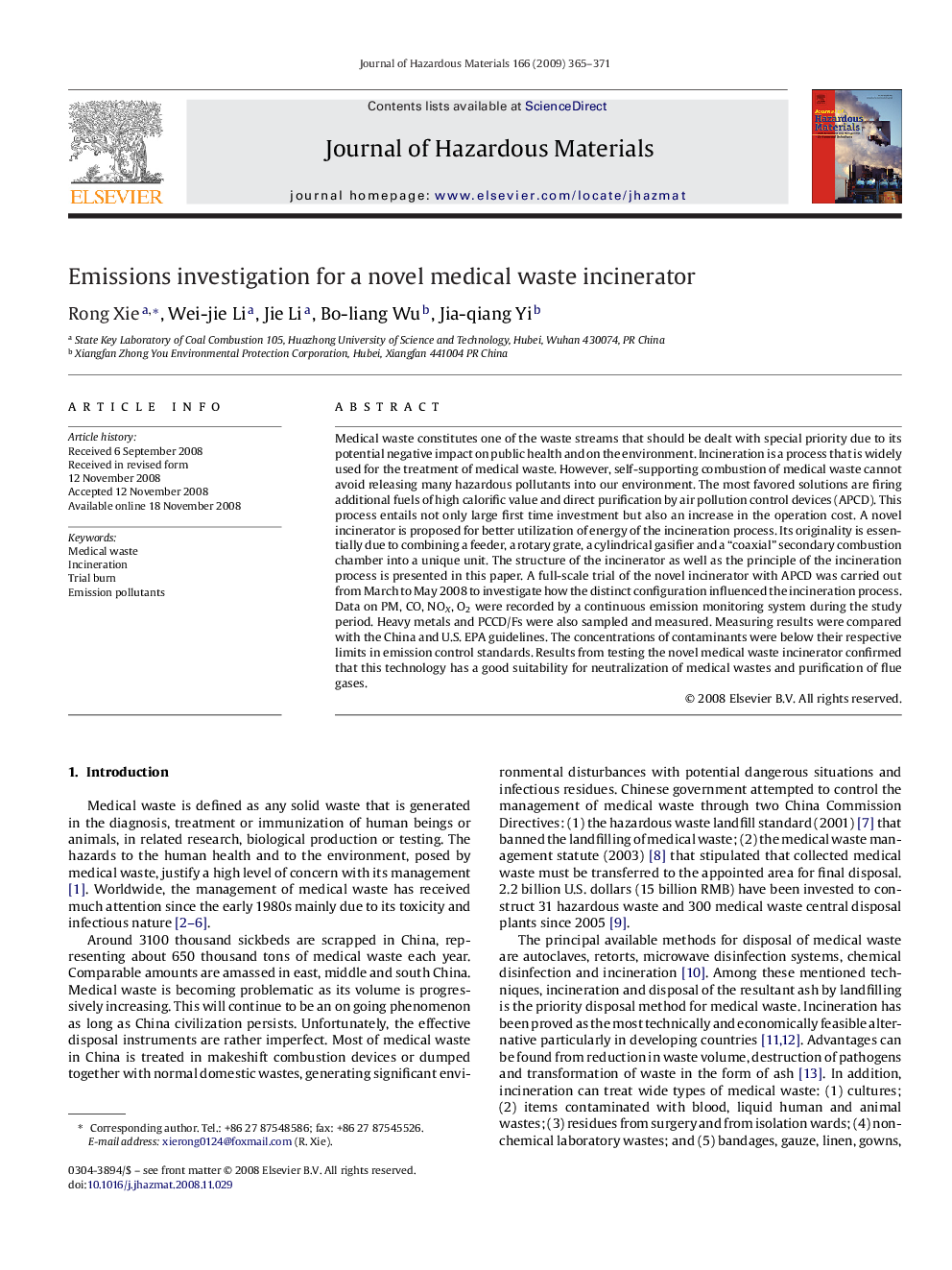| Article ID | Journal | Published Year | Pages | File Type |
|---|---|---|---|---|
| 581888 | Journal of Hazardous Materials | 2009 | 7 Pages |
Abstract
Medical waste constitutes one of the waste streams that should be dealt with special priority due to its potential negative impact on public health and on the environment. Incineration is a process that is widely used for the treatment of medical waste. However, self-supporting combustion of medical waste cannot avoid releasing many hazardous pollutants into our environment. The most favored solutions are firing additional fuels of high calorific value and direct purification by air pollution control devices (APCD). This process entails not only large first time investment but also an increase in the operation cost. A novel incinerator is proposed for better utilization of energy of the incineration process. Its originality is essentially due to combining a feeder, a rotary grate, a cylindrical gasifier and a “coaxial” secondary combustion chamber into a unique unit. The structure of the incinerator as well as the principle of the incineration process is presented in this paper. A full-scale trial of the novel incinerator with APCD was carried out from March to May 2008 to investigate how the distinct configuration influenced the incineration process. Data on PM, CO, NOX, O2 were recorded by a continuous emission monitoring system during the study period. Heavy metals and PCCD/Fs were also sampled and measured. Measuring results were compared with the China and U.S. EPA guidelines. The concentrations of contaminants were below their respective limits in emission control standards. Results from testing the novel medical waste incinerator confirmed that this technology has a good suitability for neutralization of medical wastes and purification of flue gases.
Keywords
Related Topics
Physical Sciences and Engineering
Chemical Engineering
Chemical Health and Safety
Authors
Rong Xie, Wei-jie Li, Jie Li, Bo-liang Wu, Jia-qiang Yi,
